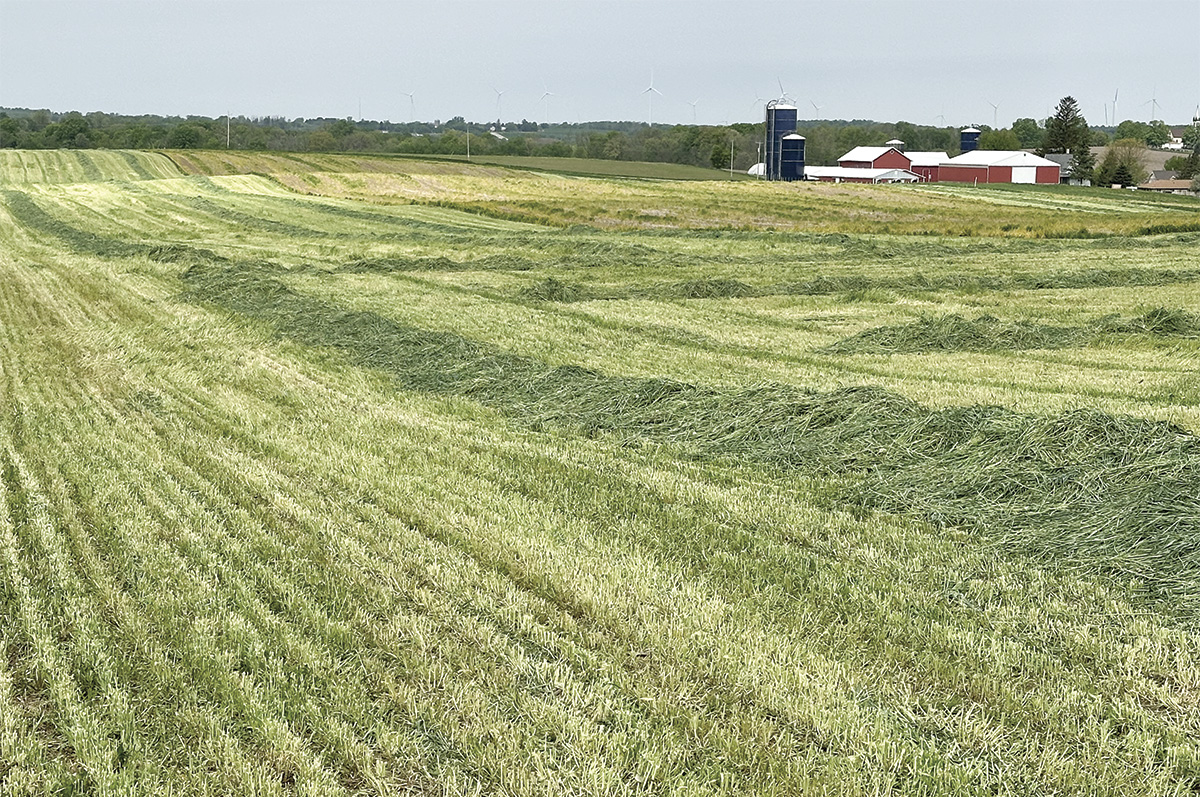The emerging trend toward alternative forages means it may be time to adjust crop nutrition protocols. Alfalfa has long been considered the “queen” of forages thanks to its high protein solubility and digestibility balanced with amino acids. But as farmers seek to cut costs, some dairies are shifting to small grains and various sorghums. Farmers can ensure their cows stay healthy and maintain optimal milk production by providing the right balance of nutrients for these alternative crops.
Maximizing milk production while minimizing costs
Forage quality and digestibility are closely related to cow health and milk yield. The more energy a cow can pull from the feed they consume, the more milk they can produce. However, the cow’s digestive system is complicated, requiring bacteria and enzymes to digest fibrous plant material but limited in how much fat and grain it can handle.
Though highly digestible, alfalfa is an operationally expensive crop, requiring three to five harvests per season. Each harvest comes with multiple field operations, adding up to a lot of labor and equipment hours. In contrast, a small grain or other forage, such as brown midrib (BMR) male sterile sorghum, keeps fiber digestibility high and gets harvested only once or twice. This significantly reduces per-acre labor and equipment costs while maintaining milk production.
It’s natural to ask: Can alternative forages achieve equal or better milk production while reducing the cost of rations? There is a growing list of dairy producers and consultants who not only think it’s possible but are actually achieving it.
Tom Kilcer of Advanced Ag Systems says farmers are seeing positive results. “A key has been to feed cows as cows,” he notes. “They are fiber digesters, and the more digestible forage included in their diets, the greater the benefit. On farms we worked with, they documented increased components as they switched to higher digestible fiber from forage.”
Kilcer notes this means an improved bottom line.
“Healthier cows reduced culling, which meant fewer heifers needed to be carried to maintain herd numbers.”
The role of crop nutrition
Jason Kanable of Spring Green, Wisconsin, is decreasing his alfalfa acres in favor of alternative forages, leading to changes in his crop nutrition program. But those changes are also helping him to more closely manage his crop nutrition and improve overall forage quality and yield.
“I’ve moved from all dry fertilizers to a 50-50 blend of liquid and dry,” he notes.

Burndt Family Farms is located in Hartford, Wisconsin, and has been transitioning away from alfalfa for the past few years. Photo courtesy of AgroLiquid.
Kanable has turned to liquid potassium fertilizer to help manage levels of dairy ration potassium. For freshening cows, a ration with lower potassium levels is desired to prevent calcium deficiencies. For lactation rations, a higher level is needed. Instead of continuing to build soil potassium levels by applying more potash, Kanable pushes his plant potassium levels higher for his lactation rations through a foliar application of liquid potassium fertilizer. He applies it with his insecticides and fungicides on the regrowth after each cutting in his alfalfa.
Another big change in Kanable’s fertility program is increased calcium and sulfur.
“The yields of my rye, sudangrass, alfalfa and timothy crops have increased substantially, in some cases nearly doubled, as a result of the increased calcium and sulfur applications,” he says.
Putting it all together
Heath Burndt of Burndt Family Farms in Hartford, Wisconsin, began the transition away from alfalfa five years ago. Like Kanable, he has also shifted toward more foliar fertilizer applications, including micronutrients, biologicals, and humic and fulvic acids. Burndt purchased a high-clearance sprayer to make it easier to apply nutrients at multiple growth stages.
“I wanted to make my dairy operation more regenerative, improving soil and cow health in the process,” he says. “That meant implementing more frequent rotations and increasing flexibility while feeding highly digestible forages with increased sugar and fat content to maintain extractable energy.”
Burndt started by planting cover crops, but soon recognized those crops could pull double duty, improving soil health and providing high-quality forages for his cows. Now, he plants a winter triticale cover crop after his corn silage is chopped. Then, in spring, he cuts and chops the triticale and plants either a male sterile BMR sorghum, corn for silage or grain or soybeans as a cash crop.
Three tips for optimizing crop nutrition
Regardless of the type of forage you’re planting, optimizing your crop nutrition program for milk production is important. Here are three tips to ensure you’re applying the right nutrients, in the right amount at the right time.
- Start with a soil test. Make sure your crop’s basic nutritional needs are met, then work with an agronomist to prioritize other inputs for the best return on investment (ROI).
- Let data guide you. Every field is different. What works for one grower may not work for another. Resist the urge to jump on new trends because it worked for your neighbor.
- Be patient. Whether bringing in a new forage system or trying a new input on existing crops, start with a small test plot and follow your crop nutrition protocols throughout the trial. Track your standard practice costs and returns along with what you spend on the new practice or program over a few years, then use that information to determine whether the investment was worthwhile. Your agronomist can help you assess profitability and the return you got on the dollar you spent.
As the trend toward alternative forages grows, ongoing research and on-farm trials will be essential for refining crop nutrition strategies. By staying informed, adaptive and focused on data-driven decision-making, dairy farmers can optimize their forage production systems for long-term success and sustainability.











